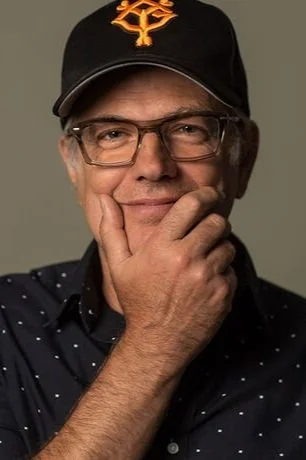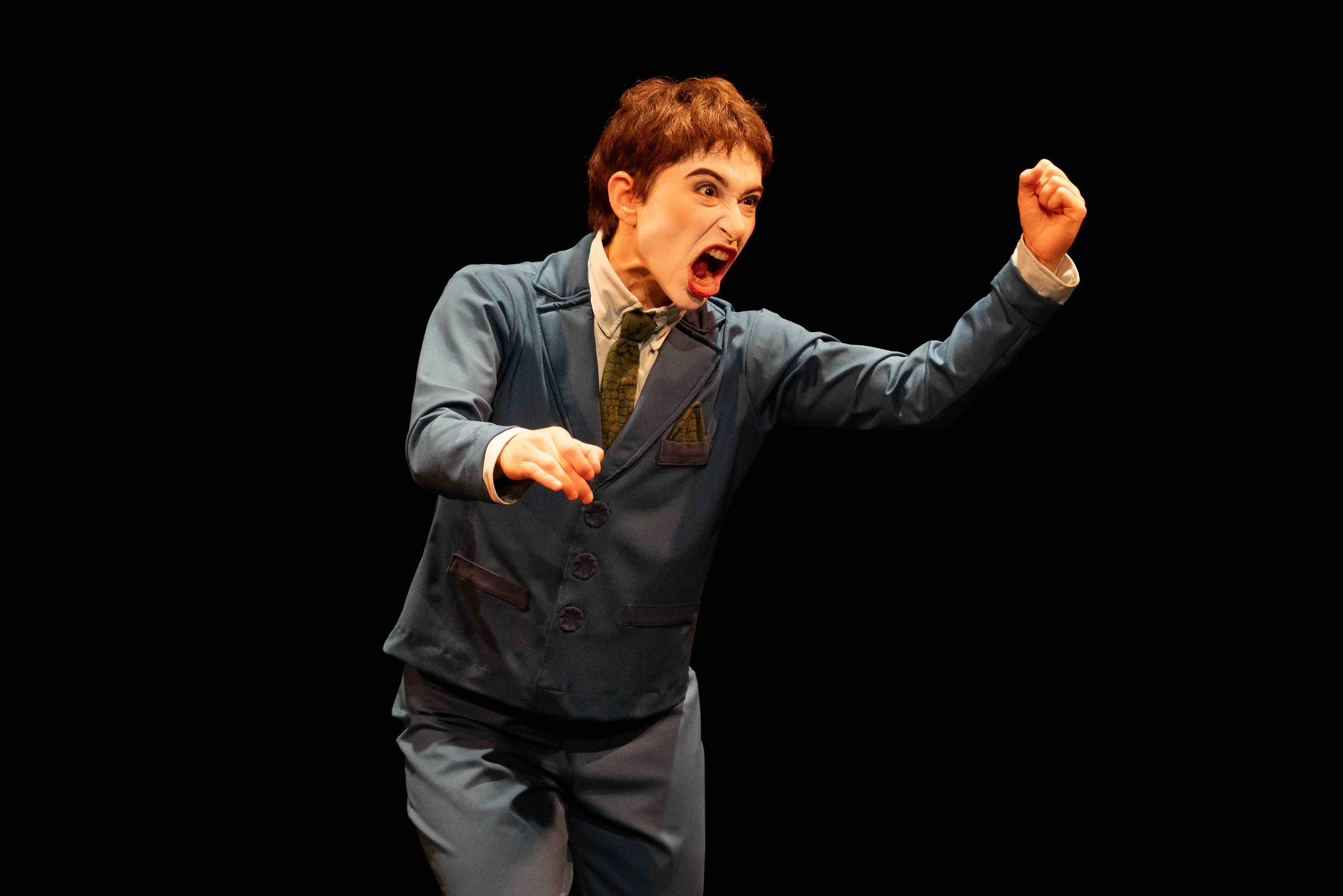In My Day traces a forgotten era of HIV activism in major verbatim theatre project
Playwright Rick Waines and director Shawn Macdonald bring to life real stories of the successes and failures in first 15 years of the virus here
The cast and creators of In My Day have spent three years building and workshopping the verbatim play. Photo by Tina Krueger Kulic
The Cultch and Zee Zee Theatre present In My Day at the Historic Theatre from December 2 to 11
When AIDS activist and theatre artist Rick Waines first sat down to transcribe stories for a massive oral history research project about the early years of HIV here, he immediately saw the potential for a verbatim play.
Waines, a hemophiliac who has lived with HIV since the mid-1980s, was helping out with HIV in My Day, via the University of Victoria. The interviews he was listening to started bringing back heartbreaking memories. And he knew they should be shared onstage to a wider audience.
“The interviews were at minimum 45 minutes, but many were two to three hours and the stories were breathtaking and filled with sorrow and triumph and anger,” he recounts. “It’s all there.” (Waines himself was interviewed for the project by researcher Ben Klassen.)
Some of the stories still move him today when he thinks about them. There was the one about the ornery housecat. “You couldn't have written a monologue any better,” he recalls. “This man’s partner at the time had a cat that hated the boyfriend, and anytime they'd be watching a movie it would smack him on the head and hiss. Then his partner dies, and the boyfriend says, ‘I don’t know what's gonna happen with this cat; it hates everybody and it hates me.’ And so he just took it home. And he tells this story over time of how he just left it alone and it would hiss and hide, and then one day it just finally cuddles up with him like a puppy dog.”
But the story didn’t end there. “Years later, the cat dies and it was the hardest thing: he says, ‘The cat was with me through so many people.’ And I was dumbfounded how touching that was. I lost so many people that I was so very close to, and this project and reading those interviews allowed me to have conversations with some of those people.” Those include people like Pei Lim or Alex Kowolski, early activists at the Vancouver Persons With AIDS Society, who died in 1992 and 1991, respectively.
“Those were such terrifying and extraordinary and, in many ways, life-affirming years, and then, thanks to highly active antiretroviral therapies, things changed and people moved on,” Waines observes. “And many of us who lived through that had to park a lot of stuff that we didn't necessarily deal with.”
What perhaps struck Waines most as he started building In My Day with dramaturg and director Shawn Macdonald was how much of that history has been forgotten—and how important it is to remember. In separate interviews, they both remark on the reactions of younger members of the 11-strong cast, who will perform the verbatim stories of the interviewees who lived with HIV, or who were caregivers through the first 15 years of the crisis here. Macdonald relates that a lot of the younger cast members have been interested in the “golden age” of sexual liberation in the pre-HIV heyday of the 1970s West End.
“How AIDS spread into the Downtown Eastside and to women: a lot of younger members of the queer community don’t know how that happened,” he adds. “As someone who's lived through the AIDS epidemic and lost a lot of friends, it was something really important to me.
“It really changed the theatre community,” the longtime theatre artist adds. “The arts community was decimated in a short time, too. We forget how quickly people died—just like how quickly, pre-vaccine, people died from COVID.”
“That intergenerational knowledge transfer is really happening,” Waines reflects. “If we never had one performance, every kid in that room knows what happened. Also: it’s not a one-way street either. There are us oldsters in the room and we are learning what gender means to them today, what culture means to them today, and I think that the university would be very pleased to know that that peer knowledge exchange has been alive and well in every workshop and every day of rehearsal.”
Waines had never written a verbatim play before—although he’s penned two previous works (Dragonfly Drinking and Secret/e) about HIV. But he knew that he wanted to make this production, drawn from the witness accounts, more dynamic than a group of talking heads directly addressing the audience. And so he started to recast the stories as a series of scenes.
“My gut just told me to collect and collect, and be like a squirrel out in the woods and gather every piece of information that was historically important or gripping,” Waines explains. “Structurally I just decided to go chronologically, and it’s a big swirl of voices and scenes—a constant swirl of scenes and memory.”
He adds choreographer Tara Cheyenne Friedenberg has become an integral collaborator on the project, helping the stories to flow together and move across the stage. In My Day starts in the present, with a young gay man getting “sucked into the past”—starting with the pre-HIV days of the 1950s, ’60s, and ’70s.
“It was pre-AIDS, where the interviewees talked a lot about sexual liberation,” Macdonald says. “There’s a lot of disco a lot of dancing: it’s very sex-positive about what it was to be a gay man–we have the whole Gandy Dancer to Luv-A-Fair to Celebrities thing.”
That era of celebration in the West End gives way to the mysterious disease first given the stigma of “the gay plague”, with In My Day travelling through the loss, mourning, caregiving, and advocacy of those difficult years before strong new antiretroviral therapies turned HIV around.
Playwright Rick Waines.
Waines points to one testamonial that he builds into a scene with several characters: “There was a fellow who had been through every treatment and they were done,” he says. “And there was this new combination therapy called ‘highly active antiretroviral therapy’ and they were trying to get him to take it, and he was having none of it. He said, ‘I've been vomiting and shitting for years and I’m done.’ He describes that the doctor left the room, but that the pharmacist was like an angel, and she said, ‘You know, these are going to work for you.’”
For whatever reason, the interview subject relented and agreed to try one last new cocktail. “And six weeks later he was delivering Christmas hampers.’ Wow, that still gets me today,” says Waines. The playwright’s own life was turned around by that radical cocktail of drugs, and he pauses to compose himself. “So I took that scene, and we have a pharmacist and the fellow telling the scene and the doctor. That’s how I’ve approached a lot of it.”
Throughout, Waines has leaned on the advice of a Committee for Anti-Racism and Equity. “They’ve called themselves the Care Bears,” he says, “and they’ve been involved with the research from the beginning.”
That’s been important to Waines, who has been a longtime ally to the gay community. As he bluntly points out, he’s “a straight guy from North Delta” who, at just 21, found out he’d acquired HIV through a blood transfusion. Finding his own hemophilia community “reeling”, he went looking for connection and a united front in AIDS activism, forging strong relationships with the gay community and chairing PWA for a few years. As he puts it: “I wanted to be around people who were fully engaged in the struggle.” Still, as is shown in the verbatim play, he’s well aware that the AIDS movement of 30-odd years ago left some people on the margins as the disease spread—intravenous drug users, sex workers, and people of colour, to start with.
“There were issues of class and issues of homophobia,” he reflects of the time. “It didn't work that well, and we thought it was important to explore the failure of the HIV community to support each other. When I was chair of the board of PWA I knew we were struggling: when I was there it was 150 gay men and they were largely white, and in general they weren’t struggling with food and shelter….At the time we were struggling to shift and change. But we all failed that test of how to take care of each other.”
Waines and director Macdonald feel these are important lessons in a time when we’re coming out of a different disease spread—one in which, once again, not everyone is working together. Among the other messages amid the testimonials: the importance of safe-sex education, the critical importance of community-based caregiving, and the integral role of treatment advocacy in halting the spread of HIV. In My Day (coproduced by Waines with Norman Armour) has been an epic, two-year project that captures the vast complexity and experiences of a time many have forgotten—but ultimately, what comes through this World AIDS Day, is a story of strength.
“For me, the show is about the way the community cared for one another,” Macdonald reflects. “There’s a message of resilience and survival – just to know that the community survived.”














